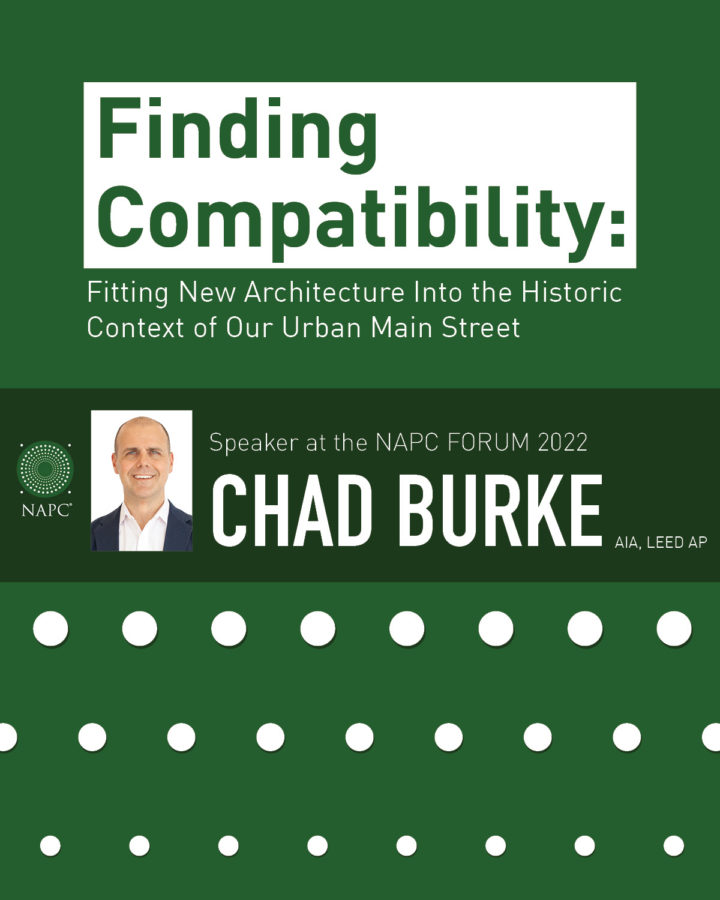Insights
Sep 9, 2022 _ insights
Finding Compatibility: Fitting New Architecture into the Historic Context of Our Urban Main Street
Too many times the discussion of infill becomes a yes or no proposition with an automatic deferral to a preference for a literal replication of the existing historic architecture. At the National Alliance of Preservation Commissions (NAPC) FORUM 2022 Conference, I joined fellow panelists—Craig Gossman, Principal Architect and Owner of the Gossman Group; Beth Johnson, Executive Director at the Cincinnati Preservation Association; and Graham Kalbi, Principal Architect at New Republic—to dig into different architectural strategies for infill development and additions that find compatibility and invention within a historic style without replication.
Two recent GBBN project examples are the Otto M. Budig Theater, home to the Cincinnati Shakespeare Company, and Willkommen, a mixed-income, multi-family residential project in Cincinnati’s Over-the-Rhine resulted in two distinct projects that fit into a spectrum of design within the historic context of the neighborhood, without literally replicating a particular historic style.
The presentation took NAPC participants through several of the design, community, and historic considerations that influenced the size, look, and feel of these projects.
You can view all the slides here: Finding Compatibility
 Chad Burke, AIA, LEED AP is a principal and director of commercial & workplace projects at GBBN. Chad guides clients through the planning, development, and construction phases of a diverse range of commercial, workplace, and innovation district projects that have lasting impact on their communities. His recent work includes Terrex Development and the University of Cincinnati’s Digital Futures Building, Hillrom’s Innovation Center addition, and Willkommen.
Chad Burke, AIA, LEED AP is a principal and director of commercial & workplace projects at GBBN. Chad guides clients through the planning, development, and construction phases of a diverse range of commercial, workplace, and innovation district projects that have lasting impact on their communities. His recent work includes Terrex Development and the University of Cincinnati’s Digital Futures Building, Hillrom’s Innovation Center addition, and Willkommen.




